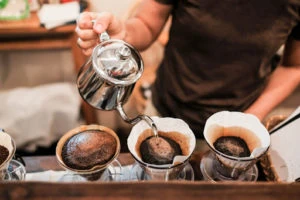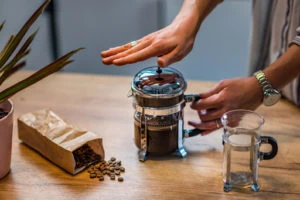Can’t get enough of your Wagner cast iron cookware? Check out this history of Wagner cast iron to understand why they are among the best collectibles on the market.
The Wagner cast iron ware ranks among the top rated of the 19th and 20th centuries. The ware is known for its durability and exceptional functionality, explaining why it’s a popular collectible.
Nonetheless, to fully appreciate Wagner cast iron and to understand why they stand out, it’s essential to learn more about the history of Wagner cast iron.
Check out these exhaustive facts about the Wagner cast iron history.
Humble Beginnings
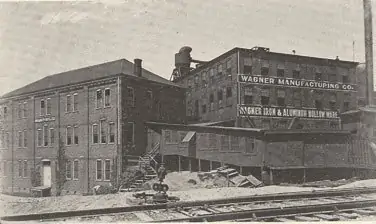
The Wagner Hollow Ware Company was officially launched in 1891, evident in its Centennial commemoration with the 1991 version of the Wagner cast iron frying pan. Originally, the Wagner Company was founded by the Wagner brothers, Bernard and Milton.
In fact, the Wagner Brothers are credited as the first manufacturers of cast iron in Sidney, Ohio. Yet, the brothers started to manufacture metal castings of light hardware for general stores a decade earlier, in 1881.
As the company got into the full swing of its operations, two extra brothers, William and Louis, joined the company. In 1891, the company primarily produced cast iron cookware.
Products included skillets, kettles, Dutch ovens, griddles, cornbread pans, and muffin pans, to mention a few.
Additionally, the Wagner Company produced a select range of aluminum cookware. The Wagner Company was the very first in America to produce aluminum cookware.
Amongst the first cookware manufacturers in Ohio, the WagnerWare cast iron cookware company grew exponentially with the population growth and expansion momentum of the time.
This made it easier for the manufacturer to build and transition to the most modern and technologically advanced manufacturing facility for casting iron at the time. WagnerWare was even able to surpass rivaling world-class cast iron cookware manufacturers, like Griswold.
This was evident in the numerous awards the manufacturer received in the preceding years, including from locations, such as Chicago, Nashville, Paris, Buffalo, and St. Louis.
The Wagner Company – The Largest American Manufacturer of Cast Iron Ware in the 20th Century
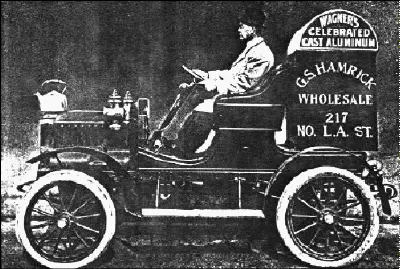
By the early 20th century, the Wagner Company’s sales had grown significantly, extending its sales across America and Europe. The mid-20th century saw a shift in the Wagner Company.
Yet, this didn’t necessarily mean a decline in production, quality, or popularity. Instead, the company simply grew, uniting the WagnerWare Company with fellow rivals Griswold.
In some circles, this is stated as “Wagner acquiring Griswold” but it is not that simple. The real story is slightly more complicated and is quite common when a small family-operated business grows into a large corporation.
Well, this is exactly what happened.
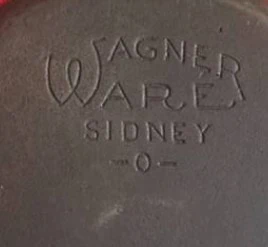
Companies are bought and sold, consolidated and dismantled, and the cast iron cookware business is no different. The Randall Corporation purchased Wagner Manufacturing in 1952.
McGraw Edison Inc. bought Wagner’s long-term competitor, Griswold, on March 29, 1957, and then sold it in December 1957 to Randall who already owned Wagner.
Due to the two World wars, the Great Depression, and an increase in low-priced cookware imports from Asia, the Wagner Company struggled financially. This led to the brothers selling their interests in the company to the Randall Company in 1952.
The Wagner-Griswold Acquisition Era

Originally, the Griswold manufacturing plant was based in Erie, Pennsylvania.
But, after its initial acquisition in 1957, production in this plant was permanently halted and the plant was shut down. This doesn’t mean that the Griswold plant didn’t continue to produce cookware.
Instead, Griswold cookware made after this period was produced at the Wagner Manufacturing plant in Sidney, Ohio. However, many experts argue that it was during this time that Griswold and Wagner began to lose the quality they were so popularly known for.
More Acquisitions
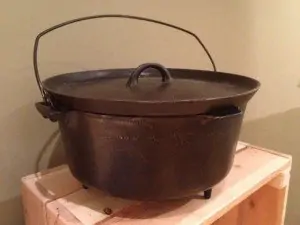
In 1957, Wagner and Griswold were purchased by an even bigger cookware giant, Randall. But, this didn’t bring any changes or reverse the cookware quality to the pre-1957s.
It is widely accepted that post-1960 Griswold and Wagner cookware is not in the same collectible class as pre-1960 cookware. Yet, in 1959, Randall was sold to Textron Corp, and this included the Griswold and Wagner cast iron cookware lines.
In 1969, General Houseware Corporation acquired Textron and continued with the production of Wagner ware until 1996.
In 1996, WagnerWare Corporation, mainly comprising the Wagner and Griswold cookware lines, was sold to a group of investors, including a former employee. Three years later, manufacturing of the cookware was permanently halted in 1999.
In the year 2000, American Culinary Corporation of Willoughby, Ohio purchased the rights, legacies, and remaining facilities. To date, the American Culinary Corporation continues to market Wagner and Wagner Ware, Magnalite, and Griswold brands as collectibles.
Incredibly enough, it is the same former employee who is the current president and CEO of the American Culinary Corporation, proving his dedicated commitment to keeping the legacy of Wagner cookware alive.
Here’s a timeline summary of the Wagner Company:
| Date | Event |
| 1881 | Began small-scale production |
| 1891 | Wagner Company officially launched with major operations |
| 1952 | Wagner Company sold to Randall (purchased Griswold in 1957) |
| 1959 | Randall was acquired by Textron Corp. |
| 1969 | Textron Corp. acquired by General Houseware Corporation |
| 1996 | WagnerWare corporation (Wagner and Griswold cookware lines) transferred to a group of investors including a former employee |
| 1999 | WagnerWare Corporation manufacturing facility in Sidney, Ohio, officially and permanently closed |
| 2000 | American Culinary Corporation of Willoughby received t legacy, rights, and remaining facilities and continues to market Wagner branded cookware as collectibles (a former employee is the President/CEO of the company) |
| 2008 | American Culinary Corporation officially closes. |
| June 2023 | The manufacturing foundry was officially demolished after deteriorating for many years and an EPA complaint. |
Wagner Ware Brands and Signature Products

Wagner brands typically included Wagner, Wagner Ware Sidney-O, Wagner Ware, National, LongLife, Magnalite, Wardway, and Ward’s Cast Iron. Yet, the Wagner Company was particularly popular for their Sidney –O- range skillets and Dutch ovens.
The Wagner Company focused primarily on cast iron, nickel plated, and aluminum cookware. But, after the acquisition of a fellow competitor, Sidney Hollow Ware from Philip Smith in 1897, the company briefly produced this cookware line.
But, in 1903, the line was resold to Phillip Smith.
Nickel-plated cookware was popular for its complementary features. Unlike cast iron and copper cookware, it does not react with acidic foods, such as tomatoes and citric juices.
Therefore, you don’t have to worry about food tainting or leaching when using nickel-plated cookware.
While nickel-plated cookware isn’t a super sensational concept today, nickel plating was considered an exceptional metal casing expertise in the 19th century. So, the Wagner nickel-plated cookware line was one of a kind during its initial launch into the market in the early 1900s.
You would typically identify Wagner cookware through the name ‘Wagner’ imprinted on the bottom of each piece of ware. The Magnalite line, introduced in the 1930s, was composed of patented aluminum alloy cookware.
With the varying thickness and optimized heat conductivity being the main selling points, this line was introduced in the 1930s to counter the falling sales during the Great Depression.
The brothers also manufactured tin hollow ware for government contracts. These typically included items, such as sugar bowls, tea and coffee pots, soup containers, hot food covers, water pitchers, and butter plates, to mention a few.
The brother also manufactured other types of table hollowware, although this doesn’t include flatware.
Wagner Cookware Quality
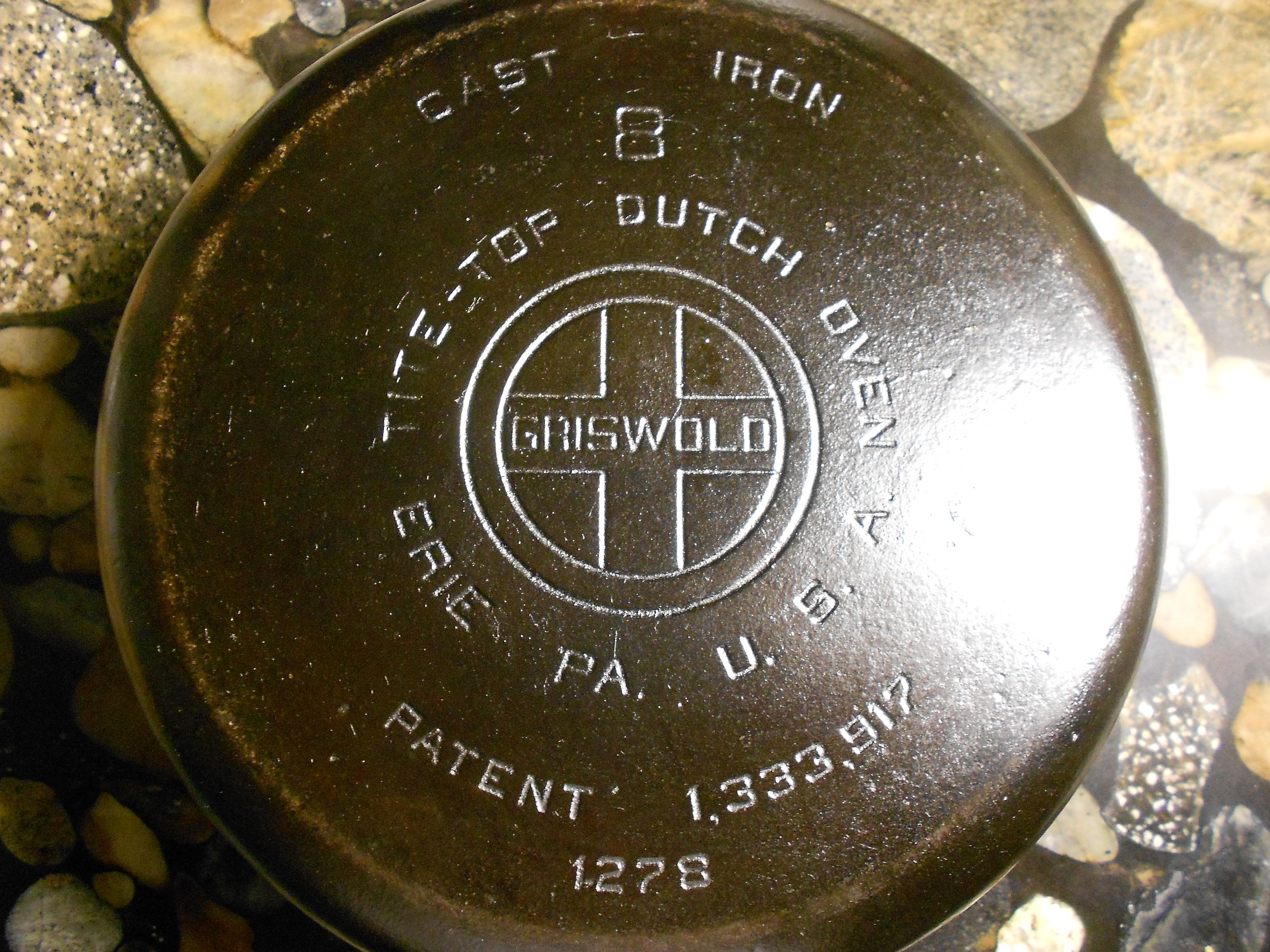
One could argue that those cast iron skillets, Dutch ovens, and griddles that were made after the merger and acquisitions are better than the ones made after 1990 or so, and that is probably not far from the truth.
However, if you compare a modern-day, Made in China, cast iron skillet to a 1970, made-in-the-USA WagnerWare cast iron skillet, to a 1920 Griswold or Wagner cast iron skillet, the difference will be clear. An interesting note is that cookware that declares it was Made in the USA is typically not considered collectible pieces.
Further, Wagner cookware manufactured after 1969 is not considered collectibles.
Wagner Cookware as Collectibles
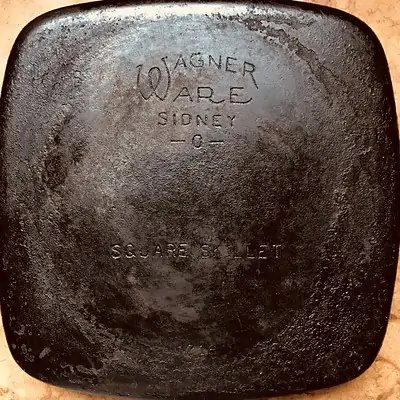
Wagner cast iron cookware continues to be a popular option to date, over a century after they were first made. In fact, many enthusiasts prefer antique cookware over modern pans. Nonetheless, it can be difficult for the untrained eye to identify authentic Wagner cookware.
Why Choose Wagner Collectibles?
Wagner Collectibles come with a wide range of benefits. For one, Wagner cookware was considered amongst the best in the 19th and 20th centuries.
Here are other key reasons to choose Wagner Cookware collectibles;
Attention to Quality
Wagner cookware is built with high attention to quality.
Each piece was hand processed and machined to form a smooth interior and exteriors. In fact, you can think of the Wagner cast iron quality as that of modern high-quality cookware like Le Creuset.
But, while Le Creuset combines traditional and modern manufacturing techniques, Wagner cookware is produced in a more traditional approach with hand casting to minimize flaws as much as possible. In fact, the workers at Wagner must have been highly skilled with great attention to detail to produce such great quality cookware.
Quality over Quantity
To emphasize this factor, Wagner really focused on quality over quantity. One of the key figures of the Wagner Company was quoted saying,
“We do not strive to manufacture hollowware as cheaply as possible but as good as it can be made. We cannot afford to put on the market ware that will not sustain our reputation. The name Wagner is cast on the bottom of each piece of ware.”
The company only struggled due to the Great Depression, Wars, and the cheaper, lower quality cookware imports from Asia that began to swarm the market during the mid-20th century.
Ultra Smooth Cooking Surface
Like any good quality antique cast iron, Wagner cast iron features a high-quality finish, no matter the line you choose. Authentic Wagner cast iron didn’t come with any casting flaws, which ensured every piece offered a super smooth interior surface and exterior surface.
A Wide Variety to Choose From
Wagner cookware comes in a wide selection of cast iron options.
Wagner cookware pieces are also durable, flawless, smooth, and reasonably priced. Plus, you can choose anything from skillets to griddles, muffin pans, waffle irons, gem pans, and Dutch ovens, to mention a few.
How to Choose an Authentic Wagner Cookware Collectible
As mentioned earlier, you may not find it easy to identify an authentic Wagner cast iron collectible, especially if you are an untrained eye. The good news is that there is a simple way to identify antique Wagner cookware from different lines.
You can choose from any of the sixteen different logos, whether you want smooth base pans or pans with heat rings. In fact, compared to other antique brands, Wagner cast iron offers a pretty generous variety to choose from.
Generally, earlier cookware was simply stamped “Wagner”. From around 1895, Wagner included the title “Sidney-“ in its cookware. The title “Wagner Ware” first appeared on cookware in the 1920s.
Here’s how you can identify common Wagner antique collectibles:
- 1891-1915 vintage cast iron: Straight “Wagner” logo stamped at the center base with the size (e.g. 10) stamped at the bottom of the base.
- 1891 – 1910 vintage cast iron: “Wagner” logo in an arc at the top of the base and the size stamped at the bottom of the base.
- 1895 – 1915 vintage cast iron: “Wagner Sidney O.” in a double arc logo at the top of the base and the bottom of the base.
- 1897-1903 vintage Sidney cast iron: Straight “Sidney” logo at the center of the base and the size at the bottom of the base.
- 1910-1915 vintage cast iron: Straight centered “Wagner Sidney O.” logo with the size stamped at the bottom.
- 1915-1920 vintage cast iron: Arc “Wagner” and straight “Sidney” markings at the top of the base and the size stamped at the bottom of the base.
- 1920 Wagner Ware Manufacturing Company vintage cast iron with heat ringed base: Scarce Wagner Ware Sidney O. with arc “Wagner”, straight “Sidney O.” and the size slightly below.
- 1924-35 vintage cast iron with heat ring: Stylized “Wagner Sidney O.” logo at the top of the base and the four-digit pattern number at the bottom of the base.
- 1935-59 vintage cast iron: Stylized “Wagner Sidney O.” logo at the top of the base and the four-digit pattern number at the bottom of the base.
- 1924-1935 vintage cast iron with heat rings: Centered stylized “Wagner Sidney –O-“logo and a four-digit pattern number at the bottom of the base.
- 1930 – 1935 vintage cast iron: “Wagner” pie logo at the top with four-digit pattern number and the words “Cast Iron Skillet” underneath at the bottom of the base.
- 1914- 1930 National line vintage cast iron with heat ring: “National” arc logo at the top of the base and the size stamped at the bottom of the base.
- 1930 Long Life line vintage cast iron: “Long Life Skillet” straight logo at the center of the base and the four-digit pattern number stamped at the bottom of the base
- 1930 Wards line vintage cast iron: Stylized “Wards Cast Iron” with the “M and W Bar” logo at the top of the base and a four-digit pattern number at the center of the base.
FAQs
Still have more questions about the History of Wagner Cast iron, check out the answers to commonly asked questions by people just like yourself;
How Do You Identify and Date Wagner Cast Iron?
You can easily identify and date a Wagner Cast Iron cookware by flipping it over and examining the base.
It typically has the Wagner logo, size, and sometimes, the pattern number. The logo design and pattern number can easily help you date your skillet.
But, if you don’t know how to differentiate logos from different years, you can always consult a reputable antique guidebook or post your cookware photo on a Wagner and Griswold collector forum for other enthusiasts to assist you.
Why Are Older Wagner Cast Iron Pans Better Than Modern Cast Iron Pans?
According to experts, high-quality vintage pans, like Wagner’s, offer a superior finish to modern ones.
They tend to offer a smoother surface with minimal to no flaws, durable casting, and better and even heat conductivity. Wagner cast iron pans also take a beating better than modern cast iron pans.
Where Can I Buy Antique Wagner Cast Iron Cookware?
There are several places you can find authentic antique Wagner cast iron cookware. These include:
- From family, like grandparents who’ve had it in the family for a long time, passing it from generation to generation
- Garage sales – some owners will want to get rid of cast iron skillets they consider useless
- Antique stores
- Flea markets with hidden gems
- Online from various vendors
Conclusion
This history of Wagner cast iron proves just how incredible the company and the brand are to date. The collector’s brand offers a pretty impressive option for enthusiasts, giving you the best quality cast iron with little to no flaws.
After all, the company has always insisted on its focus on quality over quantity. Plus, it gives you a variety of products to choose from.
The good news is that you can now easily make sure your cookware is authentic antique Wagner by using a simple logo identification hack.
Do you have dull knives? Check out an electric knife sharpener – the best sharpener for kitchen use.
Please check out my post on how I acquired my first piece of Wagner Cast Iron. It might be a different scenario than you think!
Curious about enameled cast iron? The pretty, colorful stuff – read my blog entry for some of the finer points of Enameled Cast Iron versus Cast Iron.
Reference: American Culinary Wikipedia
Here are some comments from our old blog:
James
SEPTEMBER 2, 2013 AT 8:23 AMWhy is that Wagner 1058 Skillet silver on the outside? (the top picture) It is one of the aluminum skillets? J
Billy
SEPTEMBER 3, 2013 AT 1:23 PMHi James,
It isn’t aluminum but is just the raw cast iron. It was actually covered, and I mean covered, with black, gunk-y, cracked seasoning. So I had no idea that the hammered finish was there. After a few hours with some oven cleaner the beautiful, hammered finish was exposed.
Thanks for the question.ron Smith
SEPTEMBER 17, 2013 AT 7:12 PMHow much is a Wagner Ware 1060 A worth?
diane
SEPTEMBER 23, 2013 AT 5:02 PMhow much is a fat free fryer worth 12 or 121/2 inch with ridges.
Billy
SEPTEMBER 25, 2013 AT 10:22 AMIt depends a lot on the condition but it could be from $50 – $170++. Check out eBay periodically to get a good idea. Also, is that one of the deep versions?
diane legendre
SEPTEMBER 25, 2013 AT 8:45 PMIt’s more like 11 inchs. Is 2 inchs deep. good condition. Does wagner make lids? Would like to buy a lid.
Billy
SEPTEMBER 30, 2013 AT 6:26 PMSee the 3.2 Quart Lodge LCC3 Cast Iron Combo Cooker at Amazon Hi Diane! Thanks for stopping by here again.
I think you could have a nice piece on your hands! What are the markings on the bottom? Can you tell me the labeling and lettering? Wagner does have lids and you’d have to watch eBay for a week or two to find the right one for you. The prices range from about $9 – over $50. Let me know if you need help locating a suitable lid.
Thanks!diane legendre
SEPTEMBER 25, 2013 AT 8:54 PMSays 11 3/8 is the size and 2 inchs deep. Does wagner make lids?
diane legendre
SEPTEMBER 25, 2013 AT 11:39 PMI have my mother’s corn bread pan, wagner c heavy. Believe from 1950′s any information about it.
diane legendre
SEPTEMBER 25, 2013 AT 11:53 PMWhat is older wagner ware or wagner? I have a wagner fat free fryer and corn bread pan. Think the corn bread pan c is from the 1950′s
Billy
SEPTEMBER 30, 2013 AT 6:32 PMHey Diane! Nice to see you back here. Can you tell me what is written on the bottom of the cornbread pan? That’s super cool that you have it. What is your standard cornbread recipe?
Thanks!Margaret
SEPTEMBER 27, 2013 AT 8:13 PMMy dad has a Wagner 1891 original cast iron tea pot that is rustled or deteriorated inside Frm yrs of keeping water in it on their wood burning stove. Is it possible to clean the inside and is it of any value?
Billy
SEPTEMBER 30, 2013 AT 6:46 PMHi Margaret! Thanks for coming by.
Well, you can clean the inside but it will definitely take some work. Review some of the processes here. There’s another step after the oven cleaner sessions where you treat the rusted area with a 50/50 mix of vinegar and water. The acid of the vinegar helps to remove the rust.
However, the kettle might not be a “collectible” though it will probably hold some sentimental value. So, in the 1990s the company that owned the Wagner name started to make “The Wagner’s 1891 Original Cast Iron” series in commemoration of the original cast iron company. The bottom line is that if the tea pot says “1891 Original” then, against logic, the cast iron piece is probably only about 20 years old. Anyway, let me know about what the bottom of the tea pot says.
Thanks!Mary
JULY 13, 2014 AT 8:22 PMI inherited my grandmother’s deep skillet which looks just like the one at the top of this site. However when trying to clean it up and put in the oven to season it the sheen turned to a thick glue like substance. I’ve no idea how to clean it. It doesn’t scrape out easily at all
greg
OCTOBER 3, 2013 AT 12:33 AMI’ve always favored cast iron, and particularly Wagner or Griswold because they had smooth finishes to cook on. Easier to care for too. The “L” word while they have a fine line-up are too rough. I miss the craftsmanship. Thanks for a great site. Now to find steel skillets.
Billy
OCTOBER 7, 2013 AT 12:01 PMHi Greg, Thanks for coming by… You have precisely described the way I found Wagner and Griswold. I had a small set of Lodge cookware that I assembled over the last few years and they were just so rough. I eventually sanded down the interior of the pans and skillets to smooth them out. It’s remarkable how nice the Lodge pans are after sanded them. You got it right – a craftsman used to sand each one of the pieces of cookware down. The difference is really something.
What’s your prize piece of cast iron cookware?
Thanks,
Billygreg
OCTOBER 3, 2013 AT 12:40 AMMargaret’s cleaning question reminded me of something I did 20 years ago. I had a dutch oven that was seriously deteriorated with thick rust to boot. I worked at a place that had a shot peening machine. I put the oven in it and in minutes shot peening cleaned the oven to bare clean metal ready for a wash and seasoning. I tried for 2 days to clean it before that. We still use it to this day.
Jill Moncilovich
OCTOBER 7, 2013 AT 11:05 AMLooking for a polished inside cast iron skillet that has handle with opposing loop on other side. My first one 10 to 10 1/8 inches was a Wagner and was stolen! Ugh. I like the ease of two hand pick up with the loop. Know where I could find one. I still have the lid from my old one, but if one is available with lid – I could always use an extra lid.
Billy
OCTOBER 7, 2013 AT 12:09 PMHi Jill – Oh, no. Sorry to hear about the theft.
eBay is the place to go for vintage cast iron since eBay is kind of like a consolidation of all the garage & estate sales across the country. There is a huge range of prices and quality. Try a search like “wagner 10 inch skillet” or “wagner #8 skillet” and you should have 10 or more results. Monitor for a couple of weeks and if you’re savvy, you can set up an email alert to send you a message when new items are listed that meet your criteria.
Let me know if you have any other questions. Thanks!


